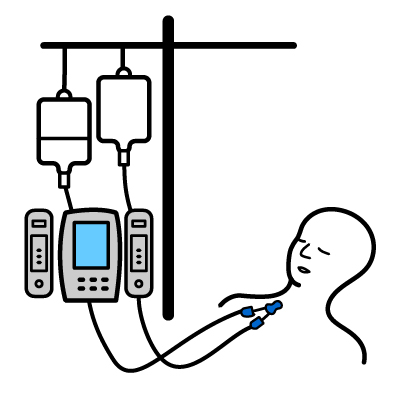The word “line” is a word used to describe a small plastic tube that is inserted into a vein or artery. Another word sometimes used for a line is a “cannula”.
“IV” stands for “intravenous” and means ‘within a vein'. IV lines are placed into a vein to give fluids and medications directly into the bloodstream. Almost all children in PICU will have at least one IV line. Sometimes they will have many IV lines
IV lines are usually placed in veins in the hands, arms or feet. In babies they can be placed in the scalp.
Larger IV lines are sometimes needed to give multiple medicines or special types of medicines. These are known as “central lines”. These are inserted into the large veins near the heart, neck or groin area.
Haemodialysis works by filtering blood directly from blood vessels. There are 2 lines usually used for haemodialysis in children.
Vas Cath
This is a special type of large line that is placed directly into a large vein in the neck or groin region.
Permacath
This type of large line is also placed into a large vein in the neck or groin region. It is different than the Vas Cath because it is tunneled into the skin near the vein. This means it can stay in longer than a Vas Cath.

These lines are inserted into an artery. These can be used to measure pressures. They also allow the staff to take blood to be tested without using a needle. They are often placed in a wrist artery.
This topic was reviewed by a paediatric intensive care medicine specialist in July 2022.